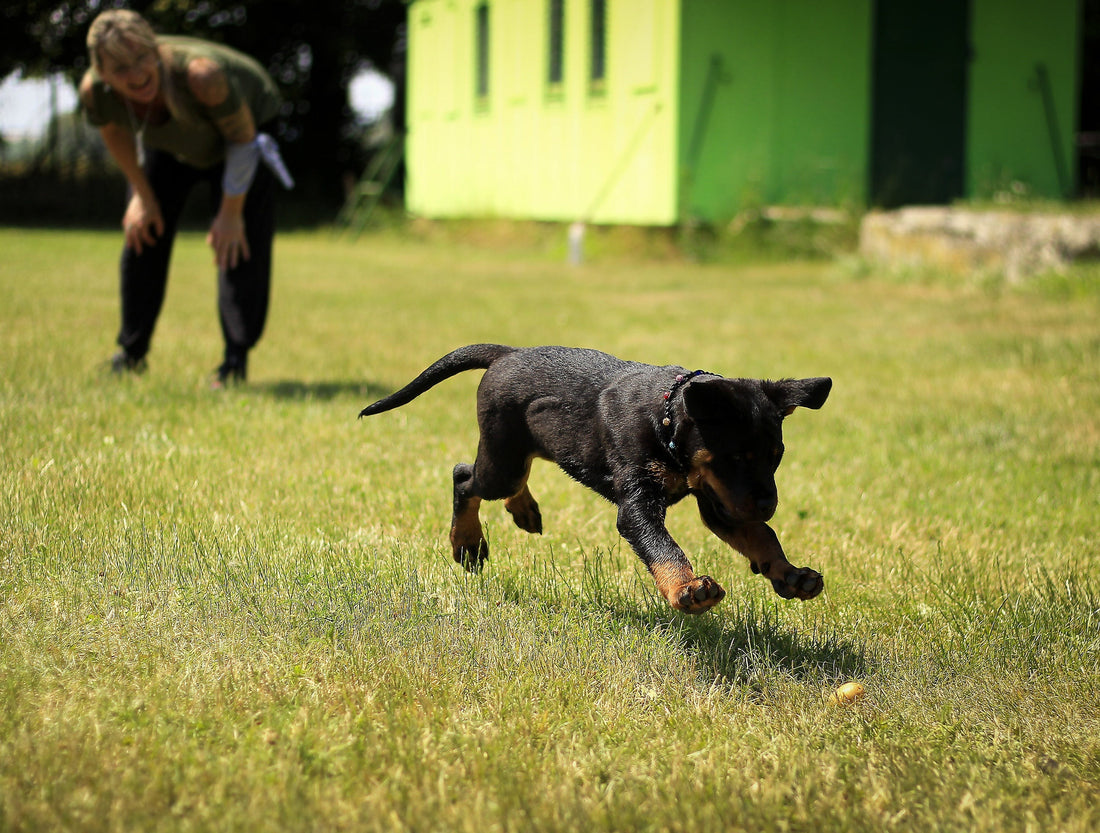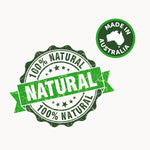
The Ultimate Guide to the Best Puppy Training Treats
The Importance of Puppy Treats for Training
Treats are more than just snacks for puppies; they're necessary in dog training. When diving into the journey of puppy training, understanding the psychology behind the best puppy training treats can elevate the process. Treats, especially the best puppy treats for training, act as powerful positive reinforcers. Read our guide on feeding puppies for more information if you’re new to puppies and treats (or if you have a fussy eater).
When a puppy sits on command, stays when told, or refrains from negative behaviour, rewarding them with one of the best puppy treats for training helps solidify that action. This reward ingrains an association in their mind: good behaviour equals a delightful treat. This positive reinforcement cycle ensures that desired behaviours are more frequently repeated, streamlining the training experience.
For puppy training tips, click here for the RSPCA guide.
However, while many options abound, it's essential to differentiate between regular treats and puppy treats for training. Regular treats are larger and meant for an occasional indulgence. In contrast, puppy treats for training are smaller and calorie-conscious, designed to reward frequently without overfeeding the young canine. Choosing the best puppy training treats not only ensures effective training but also prioritizes the puppy's health and dietary needs - check out our guide on pet nutrition for more info.
Top Recommendations for Best Puppy Treats for Training
When navigating the world of puppy training treats, pet owners often seek standout brands that blend taste with health. Amidst a sea of options, Raw and Fresh emerge as a top recommendation. This brand's ethos centres around natural, wholesome nutrition, setting it apart in an industry where many often use artificial additives or fillers. But Raw and Fresh isn’t merely about taste; it's a brand that deeply understands the nutritional needs of growing puppies. Beyond serving as effective training aids, they have a variety of treats, such as dehydrated treats that are grain-free, rich in essential nutrients, and designed for holistic canine health. Whether it's the omega fatty acids contributing to a glossy coat or antioxidants strengthening a puppy's immune system, every bite balances taste and nourishment.
Raw and Fresh offers a genuine, unpretentious commitment to a quality product. Our focus on Raw foods and dedication to merging flavour with health benefits subtly yet substantially makes them a top choice for puppy training treats. When considering the best for your pup, Raw and Fresh seamlessly align with the adage of quality over quantity, proving its worth in every treat. We also stock dog bones, but we wouldn't recommend them as a puppy training treat unless your dog is comfortable with them.
Healthy Puppy Training Treats: What to Look For
Selecting the right training treat can be difficult, so understanding ingredients, gauging size, and ensuring nutritional adequacy is important. Always prioritize your puppy's health, keeping their best interests at heart when making decisions and consult with an expert if you wish to change it. Below is a list of the key areas to look for with your puppy training treats:
H3: Organic, Grain-Free & Raw Puppy Training Treats
There's a trend towards organic treats, and for a good reason. Organic puppy training treats often guarantee higher nutritional content, devoid of harmful chemicals and artificial components, promising safer and healthier snacking.
The discussion around grain-free treats and diets for dogs is ongoing. While some believe in its benefits, it's essential to understand that carbohydrates can be a valuable energy source for dogs. We at Raw & Fresh promote a natural diet for our puppies, but always recommend research and consult with professionals if considering grain-free options.
Size and Texture of Puppy Training Treats
First and foremost, training treats should be bite-sized, roughly pea-sized, allowing for quick consumption and maintaining your puppy's focus. Large treats may be enjoyable leisure snacks, but we can distract a puppy during training sessions. A soft texture is ideal, as it reduces chewing time, unlike crunchy treats, which can elongate the process.
H3: The Flavour Puppy Training Treats
The joy of watching your puppy's reaction to various flavours can be a delightful experience. Their enthusiastic responses, characterized by vigorous tail-wagging or wide-eyed anticipation, can indicate their flavour preferences.
Price vs. Quality of the Puppy Training Treats
While price can sometimes hint at the quality of a product, it shouldn't be the sole determining factor. The ingredient list provides a clearer picture of the treat's quality.
Ingredients of Your Puppy Training Treats
The heart of a treat lies in its ingredients. It's crucial to steer clear of those with unrecognizable, complex-sounding components. A rule of thumb? If it gives you pause or you can't pronounce it, reconsider. Prioritize treats that are high in protein, ensuring your puppy gets essential nutrients to bolster their strength and health. Labels like "100% meat or protein" can indicate quality. Additionally, while options like insect-based or vegan treats are emerging, it's essential to ensure they meet your puppy's nutritional needs
Country of Origin: Where Are The Treats Made?
While it might not directly impact the treat's quality, knowing its origin can give peace of mind to some pet owners. Whether locally produced or imported from certain nations, understanding the source can offer an added layer of assurance regarding quality standards.
For other helpful guides, why not check out our guide on transitioning your puppy to raw food and shop our range of raw dog food and bulk raw dog food varieties today?
Puppy Training Treat Questions: FAQs
How Many Training Treats A Day For A Puppy?
On average, a puppy can have 10-15 training treats daily. However, this number should be adjusted based on the puppy's size and the caloric content of the treats chosen.
Understanding the right number is crucial, considering your puppy's age, size, and activity level. Overfeeding can have unintended consequences.
How Many Treats A Day For Puppy Training?
For training sessions, aim to give your puppy 10-15 treats, but always make sure these treats account for no more than 10% of their total daily calories.
It's essential to differentiate between training treats and regular ones. Also, factor in the puppy's overall daily food intake to ensure balance.
The Best Puppy Training Treats: What Are Good Puppy Treats For Training?
Good puppy treats for training are small, easily digestible, and made from wholesome ingredients, prioritizing taste and healthy treats. When it comes to training, treats made from natural ingredients that are the right size and packed with nutrition lead the pack.
Identifying the qualities that set a training treat apart and exploring highly recommended options in the market is necessary when you are looking for the best puppy training treats.
We’re biased, but a standout example is our Raw and Fresh dehydrated range of beef liver treats, Kangaroo “Roo Sticks”, and our Chicken Jerky.
When To Stop Giving Puppy Treats For Potty Training?
Generally, once your puppy consistently understands and responds to training cues, you can gradually phase out the treats. Recognizing the signs that your puppy has mastered potty training, for example, is a time to stop giving treats; rewarding learned behaviour isn't necessary if you wish to maintain it. Transitioning from treat-based rewards to other forms of positive reinforcement is important so you don't overfeed your puppy.
